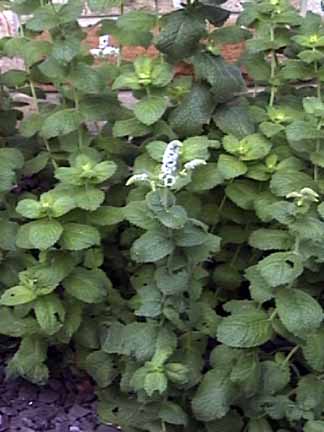Plants and People Project
Mint - Mentha
Mint was brought to the North America by Europeans. It can be recognized by the fragrance given off by the crushed leaves.
There are many varieties of mint that are grown. The leaves are brewed as a tea. Mint tea can settle nausea. It is used as a garnish and an ingredient in salads.
Mint plants can be invasive, spreading by the roots. The flowers are highly attractive to insects including bees.
Mint is used for cramps and hiccoughs of infants, children, and adults. It can serve as a remedy for sea sickness. Peppermint is considered stronger than spearmint. Indian Herbology of North America
Peppermint can be used as a flavoring agent. Both the leaves and flowers can be be used. The Herbalist
Native Americans have used mint in a variety of ways including as a medicine and a perfume. Idaho Panhandle National Forest
"Mice are so averse to the smell of mint, either fresh or dried, that they will leave untouched any food where it is scattered." Botanical.com
Monarda - Bee Balm is a member of the mint family
DISCLAIMER: These pages are presented solely as a source of INFORMATION and ENTERTAINMENT. No claims are made for the efficacy of any herb nor for any historical herbal treatment. In no way can the information provided here take the place of the standard, legal, medical practice of any country. Additionally, some of these plants are extremely toxic and should be used only by licensed professionals who have the means to process them properly into appropriate pharmaceuticals. One final note: many plants were used for a wide range of illnesses in the past. Be aware that many of the historical uses have proven to be ineffective for the problems to which they were applied.
Identification and other facts / More facts / PLANTS database
Spearmint Mint

Peppermint
